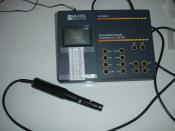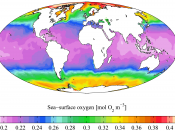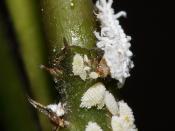Introduction
A watershed is a surrounding land area that serves as drainage for a stream. It may cover a few acres of land surrounding a very small stream or includes large rivers. The quality of a stream depends on its watershed and human activities that occur there. The most common types of water pollution are bacteria, viruses, or protists, which are human pathogens, organic wastes, sediments, toxic chemicals such as pesticides, organic waste such as sewage and animal wastes, plant nutrients such as nitrates and phosphates, or heat, which causes thermal pollution.
The study was done in the Clark watershed. Sites included above Stone Bridge on Spruce Bank Road, behind maintenance facilities parking lots and recharge pond, on the path from the liberal arts buildings between the dorms below parking lot discharge, below pedestrian bridge to dorm, above driveway between big trees and storm drains, and just below main road to dorms.
The purpose of this laboratory experiment was to closely examine a specimen of water selected from the Quinnipiac Brook on April 15, 2003. Another purpose was to learn more about the purity of the water by performing different tests with the water samples taken.
Materials and Methods
*Nail clippers
*Plastic beaker
*Plastic sample bottles
*Watch
*Thermometer
*Portable pH meter or pH indicator paper
*Dissolved oxygen test kit
*Nitrate test kit
*Chloride test kit
*Phosphate test kit
*dHdO
*footwear
*ampoule
*whirl-pak bags
*pathosccreen powder pillow
TESTS PERFORMED:
1.River Transect Test: The brooks depths were taken in different distances from the bank
2.Coliform and Pathoscreen Tests: tested for bacteria, and pathogens
3.Orthophospate Test (Titration Test): Tested for the amount of phosphate in the water
4.Nitrite Test: Tested for the amount of nitrate in the water
5.Temperature and pH Tests (Strip Test): the temperature...


